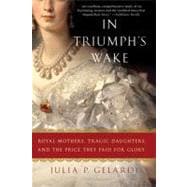
What is included with this book?
Julia Gelardi is the author of Born to Rule. Educated in the United States and Canada, she is an independent historian and author, currently living in Minnesota with her husband and two daughters.
| Simplified Genealogy | p. ix |
| Main Personalities | p. xiii |
| Chronology | p. xvii |
| Introduction | p. xxi |
| Queen Isabella and Catherine of Aragon | |
| Called to Rule | p. 3 |
| Consolidation of Power | p. 14 |
| The Conqueror of Granada | p. 28 |
| The Wonder of Europe | p. 46 |
| Destined for England | p. 57 |
| This Rough and Weary World | p. 70 |
| The Golden Couple | p. 83 |
| The Struggle for the Truth | p. 94 |
| The Final Break | p. 108 |
| Empress Maria Theresa and Queen Marie Antoinette | |
| The Pragmatic Sanction | p. 133 |
| Archduchess and Queen | p. 140 |
| Forsaken by the Whole World | p. 149 |
| The Joan of Arc of the Danube | p. 162 |
| Magna Mater Austriae | p. 173 |
| Marriage to the Dauphin | p. 186 |
| Montherly Advice | p. 200 |
| L'Autrichienne | p. 214 |
| The Guillotine Awaits | p. 224 |
| Queen Victoria and the Empress Frederick | |
| Destined to Reign | p. 241 |
| Victoria Regina | p. 251 |
| The Warrior Queen and the Princess Bride | p. 258 |
| England's Daughter | p. 267 |
| The British and German Empires | p. 281 |
| Mourning and Jubilation | p. 293 |
| The Ninety-nine-Day Empress | p. 306 |
| Apotheosis and Anguish | p. 318 |
| To Face Life with Courage | p. 330 |
| Epilogue | p. 341 |
| Notes | p. 345 |
| Bibliography | p. 377 |
| Acknowledgments | p. 387 |
| Index | p. 389 |
| Table of Contents provided by Ingram. All Rights Reserved. |
The New copy of this book will include any supplemental materials advertised. Please check the title of the book to determine if it should include any access cards, study guides, lab manuals, CDs, etc.
The Used, Rental and eBook copies of this book are not guaranteed to include any supplemental materials. Typically, only the book itself is included. This is true even if the title states it includes any access cards, study guides, lab manuals, CDs, etc.